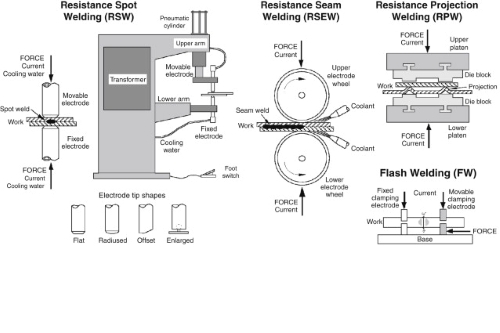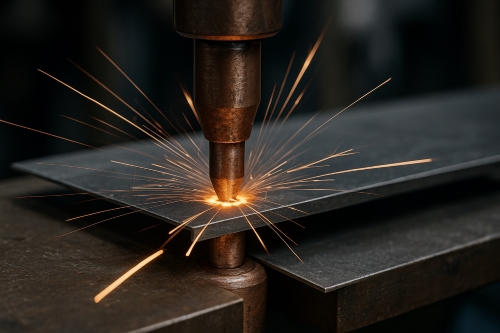What Are the Strongest Metals?
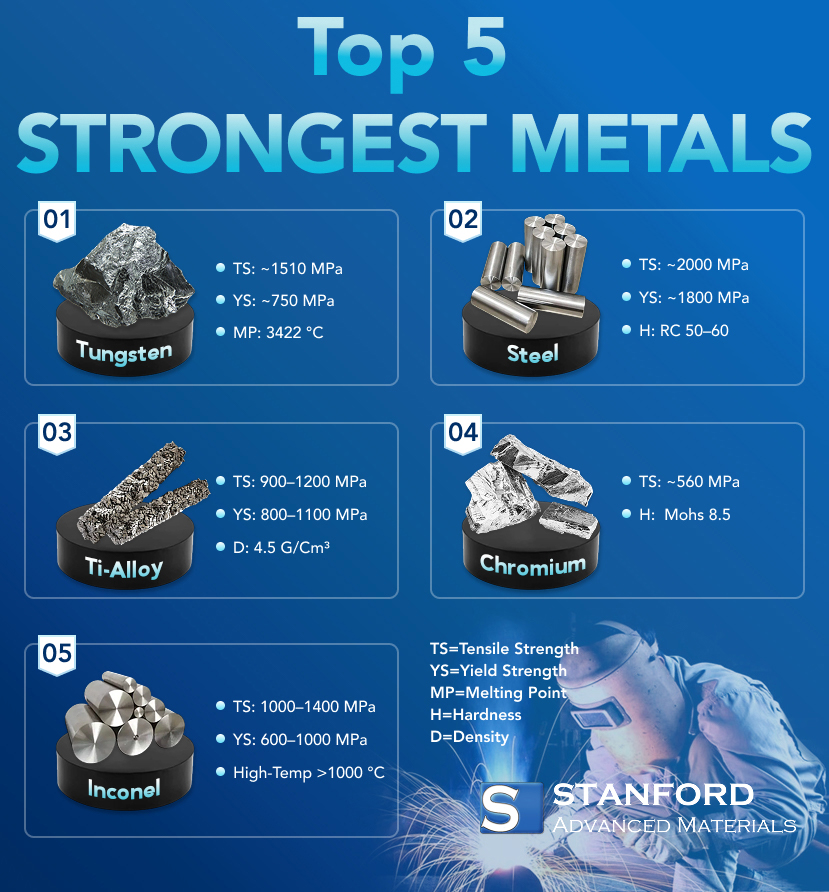
1. Tungsten – The Metal with the Highest Tensile Strength
• Tensile Strength: ~1510 MPa (219,000 psi)
• Yield Strength: ~750 MPa (109,000 psi)
• Melting Point: 3,422 °C (6,192 °F)
Tungsten is a metal known for its outstanding strength. It has a very high melting point of 3,422°C. Many engineers employ it in harsh environments. In many cases, tungsten is used when a high load is anticipated. Its tensile strength can exceed 1510 megapascals, a figure that impresses experienced mechanics. Components such as electrical contacts and heavy-duty furnace elements benefit from tungsten’s durability. In practice, tungsten is valued for its ability to retain strength at high temperatures. Tungsten parts operate reliably in industrial furnaces. Its mechanical properties make it a prime choice for situations where failure is not an option.
2. Maraging Steel – Ultra-High Strength Alloy
• Tensile Strength: up to 2,000 MPa (290,000 psi)
• Yield Strength: ~1,800 MPa (260,000 psi)
• Hardness: ~Rockwell C 50–60
Maraging steel is another high-performance material. This alloy has undergone special heat treatments that provide impressive strength. Its yield strength can approach 2,000 megapascals. Engineers use this steel when they require reliability over long periods. The aerospace industry values maraging steel for its lightweight nature combined with strength. It is also utilised in high-performance sports equipment and premium tools. Parts constructed from maraging steel contribute to the construction of bridges and aircraft. Maraging steel is a blend of iron with nickel and small amounts of other elements that assist in achieving an ultra-strong state.
3. Titanium Alloys – Strong Yet Lightweight
• Tensile Strength: 900–1,200 MPa (130,000–174,000 psi)
• Yield Strength: ~800–1,100 MPa (116,000–160,000 psi)
• Density: ~4.5 g/cm³ (about 60% of steel’s density)
Titanium alloys combine strength and light weight. They find widespread application in aircraft components and medical implants. Titanium alloys can achieve a strength-to-weight ratio that is significantly superior to many other metals. The most common titanium alloy incorporates aluminium and vanadium. With a lower density than steel, this alloy assists in designing engines and frames that require both lightness and strength. For instance, many bicycle frames and aircraft parts utilise these alloys. Titanium alloys perform well in harsh conditions. They resist corrosion and exhibit a user-friendly strength for everyday applications. This makes them ideal for projects where weight is critical.
4. Chromium – High Hardness and Corrosion Resistance
• Tensile Strength: ~560 MPa (81,000 psi)
• Hardness: ~8.5 on the Mohs scale
Chromium stands out due to its considerable hardness and resistance to corrosion. This metal is not frequently employed in its pure form for construction. Instead, chromium is used as a coating. Vehicle bumpers or plumbing fixtures often receive a layer of chromium. This layer provides a shiny finish and ensures that the object remains intact for an extended period. The hardness of chromium is approximately 800 to 1,000 on the Vickers scale. Its inclusion in stainless steel enhances resistance to rust and wear. In practice, chromium plating is common in the automotive industry.
5. Inconel – Nickel-Based Superalloy
• Tensile Strength: 1,000–1,400 MPa (145,000–203,000 psi)
• Yield Strength: ~600–1,000 MPa (87,000–145,000 psi)
• High-Temp Resistance: Maintains strength above 1,000 °C (1,832 °F)
Inconel is a group of nickel-based superalloys recognised for their stability in extreme conditions. Inconel retains its strength when exposed to temperatures exceeding 700 °C. Such metals are utilised in the construction of gas turbines, rocket engines, and chemical processing equipment. The high resistance to oxidation and corrosion distinguishes Inconel from many other alloys. The performance of Inconel in extreme environments remains unparalleled. Engineers favour this superalloy when confronted with the most challenging work conditions.
Conclusion
Strong metals have defined modern life. They contribute to safer and more efficient systems in transportation, construction, and high-tech industries. Each metal discussed here has a specific role.
Frequently Asked Questions
F: What makes tungsten stand out among metals?
Q: Tungsten is valued for its exceptional tensile strength and very high melting point.
F: Why is maraging steel preferred in aerospace applications?
Q: Its heat-treated properties yield ultra-high strength and toughness, which are ideal for high-stress components.
F: How do titanium alloys benefit modern engineering projects?
Q: They offer an unmatched balance of strength and light weight for critical components.

 Bars
Bars
 Beads & Spheres
Beads & Spheres
 Bolts & Nuts
Bolts & Nuts
 Crucibles
Crucibles
 Discs
Discs
 Fibers & Fabrics
Fibers & Fabrics
 Films
Films
 Flake
Flake
 Foams
Foams
 Foil
Foil
 Granules
Granules
 Honeycombs
Honeycombs
 Ink
Ink
 Laminate
Laminate
 Lumps
Lumps
 Meshes
Meshes
 Metallised Film
Metallised Film
 Plate
Plate
 Powders
Powders
 Rod
Rod
 Sheets
Sheets
 Single Crystals
Single Crystals
 Sputtering Target
Sputtering Target
 Tubes
Tubes
 Washer
Washer
 Wires
Wires
 Converters & Calculators
Converters & Calculators
 Write for Us
Write for Us
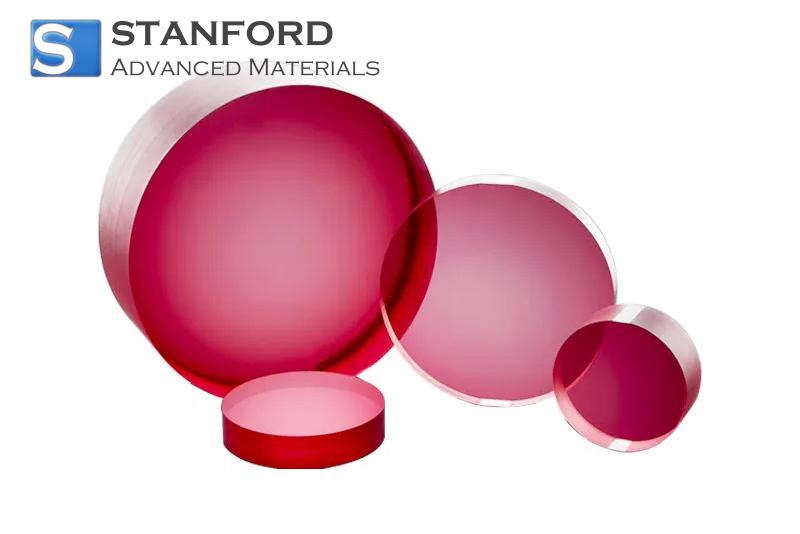
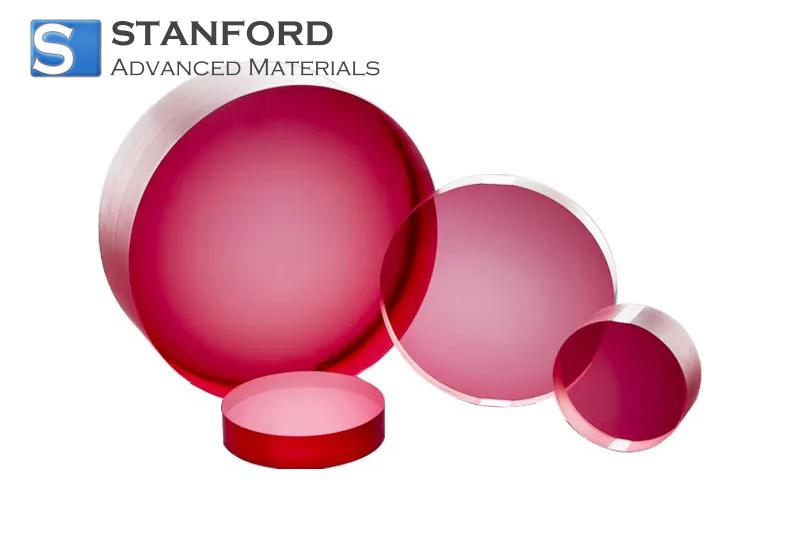
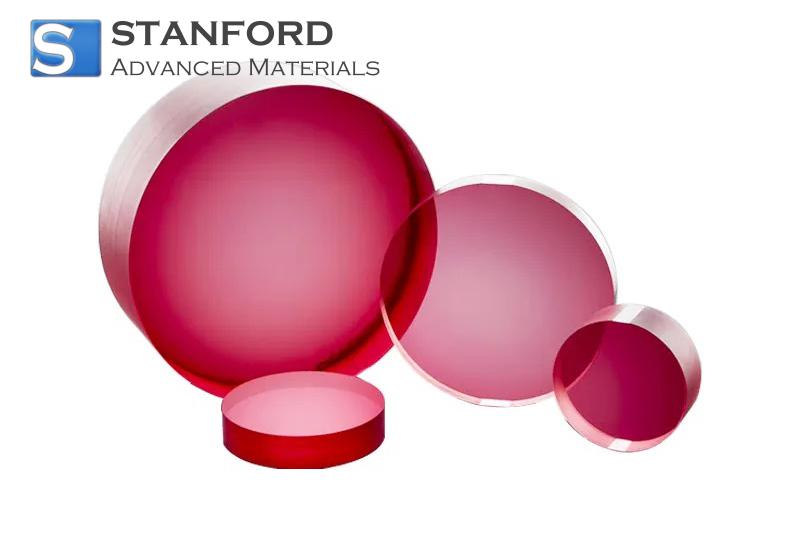
 Chin Trento
Chin Trento


